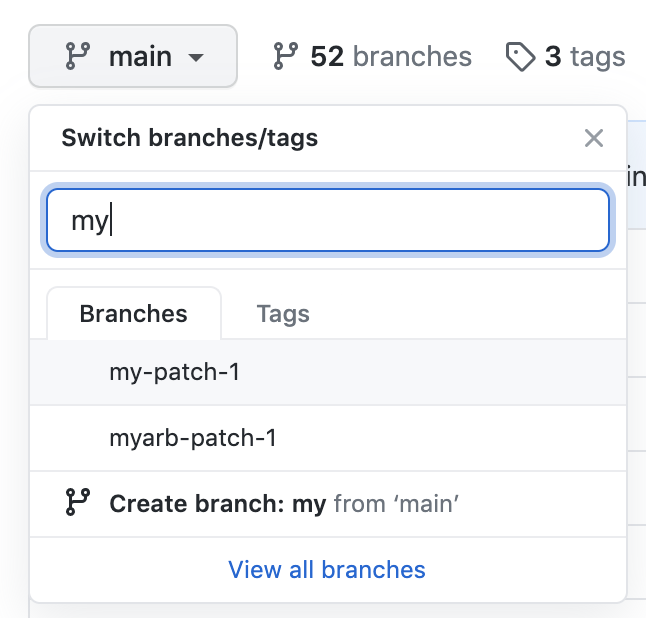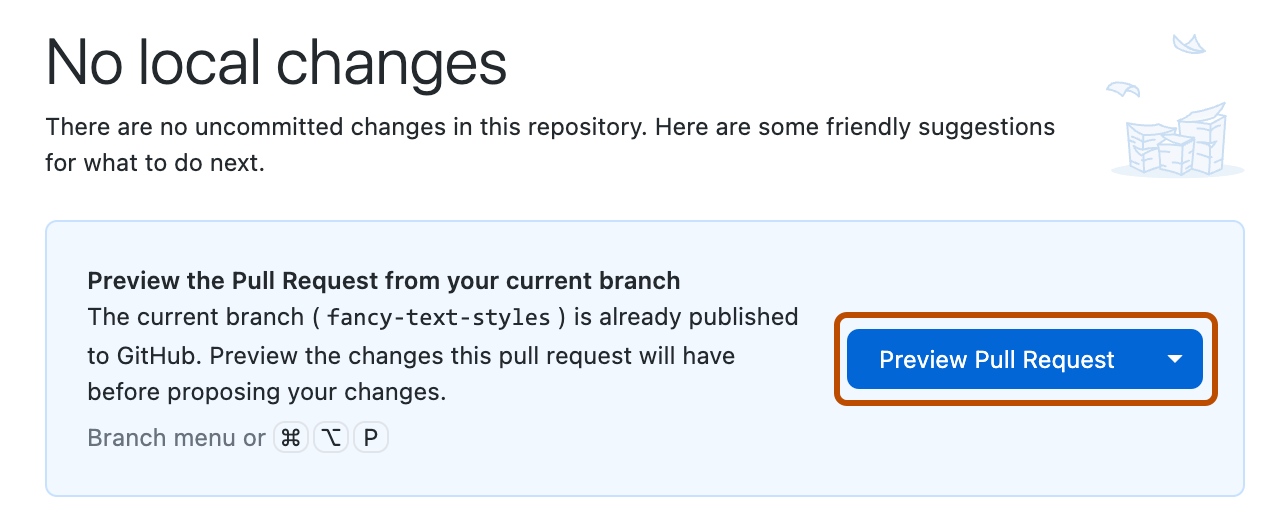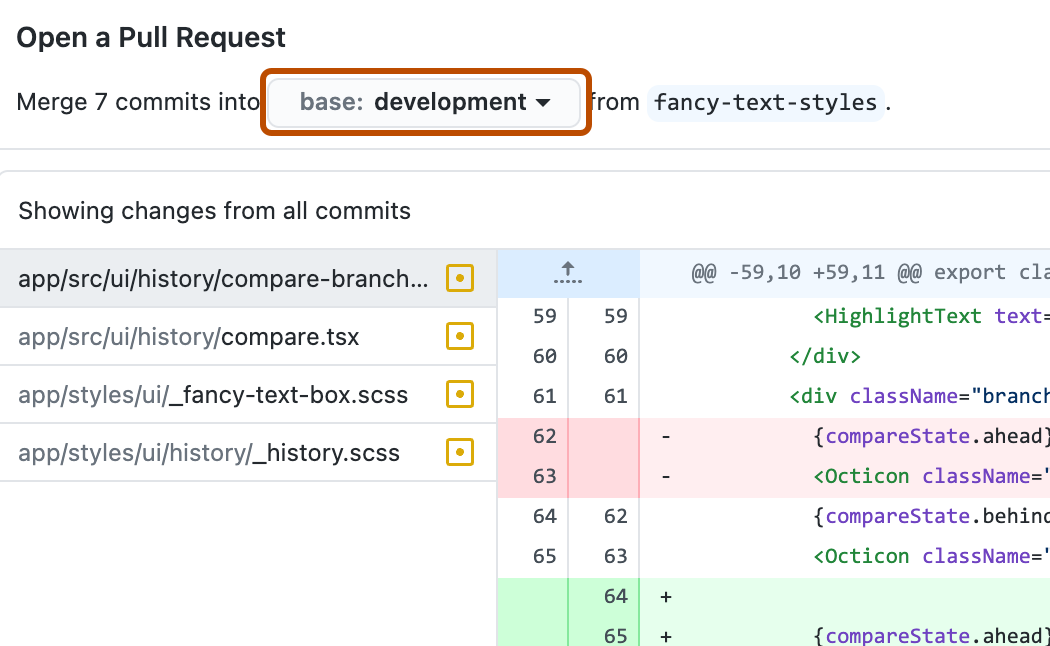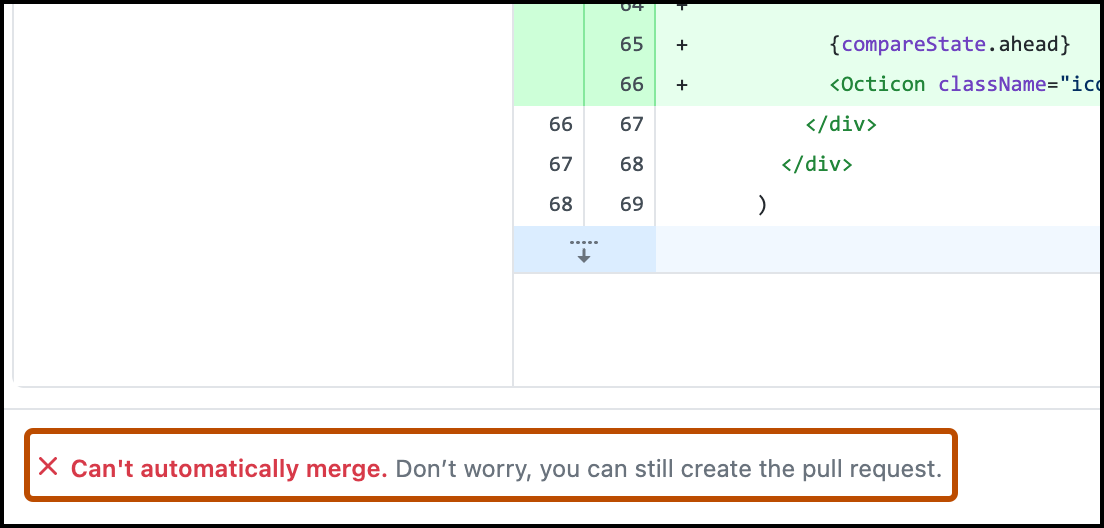If you want to create a new branch for your pull request and do not have write permissions to the repository, you can fork the repository first. For more information, see "Creating a pull request from a fork" and "About forks."
You can specify which branch you'd like to merge your changes into when you create your pull request. Pull requests can only be opened between two branches that are different.
You can link a pull request to an issue to show that a fix is in progress and to automatically close the issue when someone merges the pull request. For more information, see "Linking a pull request to an issue."
Changing the branch range and destination repository
By default, pull requests are based on the parent repository's default branch. For more information, see "About branches."
If the default parent repository isn't correct, you can change both the parent repository and the branch with the drop-down lists. You can also swap your head and base branches with the drop-down lists to establish diffs between reference points. References here must be branch names in your GitHub repository.

When thinking about branches, remember that the base branch is where changes should be applied, the head branch contains what you would like to be applied.
When you change the base repository, you also change notifications for the pull request. Everyone that can push to the base repository will receive an email notification and see the new pull request in their dashboard the next time they sign in.
When you change any of the information in the branch range, the Commit and Files changed preview areas will update to show your new range.
Tips:
- Using the compare view, you can set up comparisons across any timeframe. For more information, see "Comparing commits."
- Project maintainers can add a pull request template for a repository. Templates include prompts for information in the body of a pull request. For more information, see "About issue and pull request templates."
Creating the pull request
-
On your GitHub Enterprise Server instance, navigate to the main page of the repository.
-
In the "Branch" menu, choose the branch that contains your commits.

-
Above the list of files, in the yellow banner, click Compare & pull request to create a pull request for the associated branch.

-
Use the base branch dropdown menu to select the branch you'd like to merge your changes into, then use the compare branch drop-down menu to choose the topic branch you made your changes in.
-
Type a title and description for your pull request.
-
To create a pull request that is ready for review, click Create Pull Request. To create a draft pull request, use the drop-down and select Create Draft Pull Request, then click Draft Pull Request. For more information about draft pull requests, see "About pull requests."
Tip: After you create a pull request, you can ask a specific person to review your proposed changes. For more information, see "Requesting a pull request review."
After your pull request has been reviewed, it can be merged into the repository.



